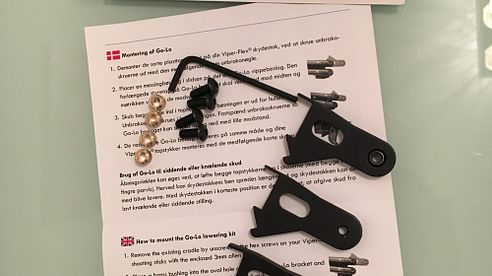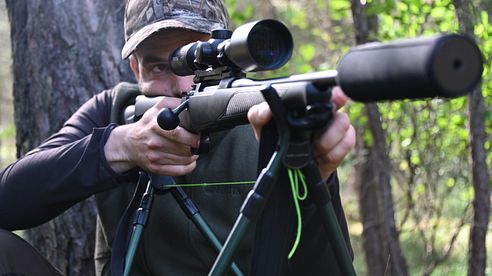Wild boar expert and journalist Max Götzfried is showing us that taking your trousers and shoes off means you can get within feet of these amazing animals. Instead of waiting for the boar to come to him in a high seat he goes to them. It's an exhilarating way to hunt and a method that Sporting Shooter editor Dom Holtam is now keen to promote - bare bottom stalkers unite!
This item first appeared in Fieldsports Britain episode 198. To watch the whole show go to http://Fcha.nl/fieldsportsbritain198
▶ Join the Fieldsports Nation and fund our fight for fieldsports in the media http://Fcha.nl/fieldsportsnation - for full details https://www.youtube.com/channel/UCfoE... for YouTube membership http://www.patreon.com/fieldsportscha... for the same via Patreon To become a more structural shareholder, visit http://fieldsports.envestry.com
▶ Sign up for our weekly email newsletter http://Fcha.nl/register
▶ Fieldsports Shop Go to http://fieldsports.shop
We’re proud to promote enjoyment of fieldsports and the countryside. There are three guiding principles to everything we do on Fieldsports Channel:
▶ Hunt, shoot and fish responsibly
▶ Respect the quarry
▶ Ensure a humane, clean and quick kill
Take part in nature. Join the Fieldsports Nation https://Fcha.nl
Risk warning: investments of this nature carry risks to your capital as well as potential rewards. Approved as a financial promotion by Envestors Limited. Which is authorised and regulated by the Financial Conduct Authority (No. 07236828.)
Why shoot wild boar?
Wild boar were once native to Great Britain but became extinct more than 300 years ago. Following escapes or deliberate releases from wild boar farms from the 1980s, they have now established breeding populations in the wild including Kent and East Sussex in the South-East of England, Dorset, Devon and the Forest of Dean in the South-West, and parts of Scotland. DEFRA estimates the current population at around 500 in the established colonies. Local wildlife managers estimate it at nearer 5,000.
Wild boar are omnivorous and approximately 400 species of plants and animals have been reported to be part of their diet. Their habit of rooting through the floor of woodland and pasture leaves a clear indicator of their presence. They will take both eggs and nestlings of ground-nesting birds and can damage crops, gamebird release pens and game feeders. Damage to agriculture can also be extensive and concerns have been raised regarding collisions with traffic. Boar have no natural predators in the UK meaning culls are necessary to control population growth.
Wild boar are susceptible to the same diseases as domestic pigs and therefore have the potential to spread infectious disease such as swine fever, foot & mouth and Aujesky’s disease (Gow, 2002; Natural England, 2007).
To read the DEFRA wild boar action plan, visit http://www.britishpigs.org.uk/feralwildboar.pdf
 2 Sauen auf der Pirsch erlegt!
2 Sauen auf der Pirsch erlegt!
 Pimp my Viper Flex mit GO-LO
Pimp my Viper Flex mit GO-LO
 Zielstock von PH-Jagt
Zielstock von PH-Jagt